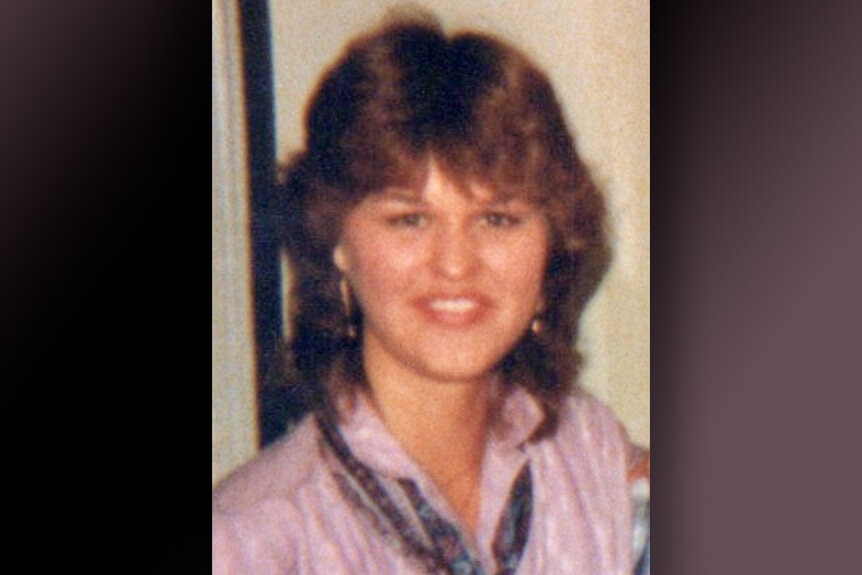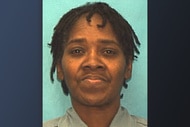Create a free profile to get unlimited access to exclusive videos, breaking news, sweepstakes, and more!
Bite Mark on Slain Nurse's Arm Leads to Scorned LAPD Detective 23 Years After the Murder
DNA analysis revealed that the bite on the victim was made by a woman. It was the key to unlock the cold case.
Sherri Rasmussen, a 29-year-old nurse and newlywed three months into her marriage, was enjoying life and looking forward to what it would bring. Tragically, it was cut short on February 24, 1986, when she was fatally shot in her Van Nuys, California condo.
Her body was found around 6 p.m. by her husband, John Ruetten, who’d just come home from work.
How was Sherri Rasmussen killed?
“Sherri was shot in the chest and there was significant trauma to her face,” Shannon Presby, a head deputy district attorney for the Los Angeles County DA's Office, told The Real Murders of Los Angeles, airing Fridays at 9/8c on Bravo. The head injuries indicated “that she had been hit with a hard object numerous times,” added Presby. There were no signs of a forced entry, but a broken ceramic vase and scattered papers indicated a struggle occurred, according to Mark Safarik, a retired FBI criminal profiler.
In addition, the victim’s BMW was missing. Was this a burglary gone wrong?
Bite mark swabbed for evidence
Officials observed that Rasmussen had two broken fingernails and a bite mark on her arm. The bite was swabbed and collected as evidence.
Rasmussen’s family and friends described her as a “very smart” and “very caring” person who always looked out for others.
Investigators learned that Ruetten, an engineer, and Rasmussen dated for a year before tying the knot. Detectives began their investigation by interviewing Ruetten. He left for work at 7:20 a.m. Co-workers confirmed he was at the office all day. Ruetten was essentially cleared, investigators said.
Neighbors told police that they’d seen Rasmussen’s garage door closed at 8:30 a.m. It was open at 9:30 a.m. and her BMW was gone. Investigators believed the murder happened between 8:30 a.m. and 9:30 a.m.
Detectives asked Rasmussen’s parents if their daughter had any enemies. They stated that she had had an altercation with one of Ruetten’s former girlfriends but they didn’t know her name.
Ruetten told investigators that he’d casually dated a woman when he was in college at UCLA. He said he didn’t believe she’d have any reason to harm his wife, according to Presby.
Was Sherri Rasmussen killed in a robbery gone wrong?
Investigators returned to their original theory of a botched robbery.
The autopsy report revealed that Rasmussen had been shot three times by a .38 caliber firearm. An injury to Rasmussen’s forehead appeared to have been made by the barrel of a revolver, according to Safarik.
After two weeks with no new leads, Rasmussen’s car was found in a residential area a few miles from the victim’s home.
“The car was unlocked and the keys were in the ignition,” said Presby. “The car was processed but there weren’t any fingerprints or anything of evidentiary value.”
Five weeks later, investigators thought they caught a break. Two armed individuals broke into a nearby residence where they found the owner at home.
They had a handgun, but they didn’t use it. Instead, they fled the scene, according to Safarik. Investigators considered that the same pair could have killed Rasmussen.
The victim described the home invaders as Hispanic and in their early 20s. A sketch was made, but no new leads turned up.
Sherri Rasmussen's murder case goes cold
Three months after the murder, Ruetten left Los Angeles. The case continued to grow colder.
Fifteen years later, the case remained unsolved. In 2001, the LAPD formed a six-member dedicated cold case unit.
“Our emphasis was on DNA cases,” said retired LAPD detective Cliff Shepard. “DNA was new to us. We were learning what to do with it.”
Bite marks are rich sources of DNA, so Rasmussen’s homicide was reopened. The bite mark that had been swabbed and collected as evidence was tested for DNA.
The analysis showed that the bite was made by a woman, said Shepard. There was no match for the swabbed DNA in CODIS, the Combined DNA Index System.
Shepard reconsidered the idea about the duo in the suspected burglary gone bad. Were they a contemporary Bonnie and Clyde?
Applying that theory to burglary teams made up of a man and a woman active in 1986 didn’t yield immediate results.
Sherri Rasmussen's case and the "Grim Sleeper"
At this point, the cold case unit was assigned to work with a task force to track down the “Grim Sleeper” serial killer terrorizing Los Angeles.
Rasmussen’s case was shelved. “I thought that the crime would never be solved,” said Rasmussen’s sister Teresa Lane.
Then in 2009, L.A. homicides were down and Rasmussen’s case was reopened. Investigators questioned the burglary gone bad theory.
One reason was because Rasmussen’s condo was in the middle of the complex. Most robbers target homes on the outer edge. Except for the car, no valuables were touched.
RELATED: "High Priest of Silent Cinema" Killed in Business Partner's Murder-For-Hire Plot
“All of this together suggested that this was actually an interpersonal crime that someone tried to cover up as a staged burglary,” said Safarik.
Investigators focused on women in Rasmussen’s life. Her mother and sisters gave DNA samples and were eliminated as suspects.
“There was also John Ruetten’s ex-girlfriend that he had told them about right after the murder,” said Presby.
Twenty-three years after Rasmussen’s murder, investigators spoke to Ruetten again, who had remarried. In the follow-up interview, he told detectives that he was never in love with the ex-girlfriend from college, but believed she was in love with him.
When the ex learned that he was engaged to Rasmussen, she had asked to see him and expressed her feelings. “She said, ‘Can we be intimate one more time?,’” said Presby.
LAPD Detective Stephanie Lazarus emerges as a suspect
They had sex, added Presby, but it changed nothing. Ruetten then revealed to investigators that the woman, Stephanie Lazarus, was a veteran LAPD detective.
When the crime took place in 1986, Lazarus was a patrol officer. During her career, she rose through the ranks.
In 2009, Lazarus was one of two LAPD detectives that were focused on high-end art. Detectives knew they needed to quietly gather evidence before accusing the respected cop of murder.
RELATED: Real Housewife Garcelle Beauvais to Narrate The Real Murders of Los Angeles This Fall
They covertly tailed her to Costco, where she drank a soda. When she tossed her cup in the trash, an officer collected the cup for DNA evidence.
DNA on Lazarus’ cup matched the bite mark on Rasmussen’s arm. Investigators then learned that shortly after the homicide, Lazarus had reported that her backup firearm — a .38 caliber revolver — had been stolen. It was the same type of weapon used to shoot Rasmussen.
Stephanie Lazarus is arrested for murder
Detectives reached out to Lazarus. They said they were working on an art theft case and needed her expertise. She obliged and they seized the moment to question her about Rasmussen’s murder.
According to Presby, “You could see her thinking, ‘What do I say to get out of this interview?’”
Lazarus was arrested for Rasmussen’s murder. Her trial began in 2012 in Los Angeles County Superior Court. Prosecutors presented a classic motive, the scorned woman who struck back, according to The Real Murders of Los Angeles.
Journal entries made by Lazarus about Ruetten that had been collected as evidence bolstered the theory.
Prosecutors argued that Rasmussen allowed Lazarus into her home and a fight broke out. They believe Lazarus bit the victim during a battle for the gun.
After deliberating for eight hours, the jury returned with a guilty verdict. On March 8, 2012, Lazarus was sentenced to 27 years to life in prison. She is eligible for parole in November of 2023.
To find out more about the case, watch The Real Murders of Los Angeles, airing Fridays at 9/8c on Oxygen.





































